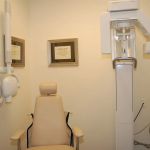What is Oral Candidiasis and How is it Treated?
- 1 - What is Oral Candidiasis?
- 2 - Symptoms of Oral Candidiasis
- 3 - Causes of Oral Candidiasis
- 4 - Treatment Options for Oral Candidiasis
- 5 - Preventing Oral Candidiasis
- 6 - When to See a Doctor
1. What is Oral Candidiasis?
Oral candidiasis, commonly known as oral thrush, is a fungal infection that affects the mucous membranes inside the mouth. It is caused by an overgrowth of Candida, a type of yeast that naturally exists in small amounts in the mouth, throat, and digestive tract. When the balance of bacteria and yeast is disrupted, Candida can grow uncontrollably, leading to symptoms of oral candidiasis.
Oral candidiasis is more common in individuals with weakened immune systems, infants, the elderly, and those taking certain medications such as antibiotics or corticosteroids. It can also affect individuals with conditions like diabetes and HIV/AIDS.
2. Symptoms of Oral Candidiasis
The symptoms of oral candidiasis can vary in severity and may include:
- White, creamy lesions on the tongue, cheeks, gums, or roof of the mouth
- Redness or soreness in the mouth
- Difficulty swallowing or a feeling of food being stuck in the throat
- Loss of taste or an unpleasant taste in the mouth
- Cracking at the corners of the mouth
These symptoms may worsen if left untreated, and the infection can spread to other parts of the body.
3. Causes of Oral Candidiasis
Oral candidiasis is caused by the overgrowth of Candida yeast in the mouth. The following factors can contribute to this overgrowth:
- Weakened immune system (due to conditions like HIV/AIDS, cancer treatments, or diabetes)
- Use of antibiotics, corticosteroids, or certain medications
- Dry mouth or reduced saliva production
- Poor oral hygiene or denture use
- Uncontrolled diabetes
- Smoking
- Hormonal changes, such as pregnancy or the use of birth control pills
While Candida is a naturally occurring organism in the body, these factors can lead to an imbalance, allowing the yeast to grow unchecked.
4. Treatment Options for Oral Candidiasis
Treating oral candidiasis typically involves antifungal medications, which can be prescribed by a doctor. The treatment options include:
- Topical Antifungals: These are applied directly to the affected areas, such as lozenges, mouthwashes, or creams. Examples include nystatin or clotrimazole.
- Oral Antifungals: In more severe cases, oral medications like fluconazole or itraconazole may be prescribed to help eliminate the infection.
- Home Remedies: Although not a substitute for professional treatment, some individuals use natural remedies such as saltwater rinses or coconut oil to manage symptoms.
Along with medications, maintaining good oral hygiene, such as brushing teeth regularly and cleaning dentures, can help prevent and manage oral candidiasis.
5. Preventing Oral Candidiasis
Preventing oral candidiasis involves maintaining a healthy balance of microorganisms in the mouth. Some steps to reduce the risk of infection include:
- Brushing teeth and gums regularly with fluoride toothpaste
- Rinsing the mouth with water after using inhaled corticosteroids
- Maintaining good overall health and managing chronic conditions like diabetes
- Eating a balanced diet rich in fruits, vegetables, and probiotics
- Cleaning dentures and mouthpieces regularly
- Limiting sugar intake, which can promote yeast growth
By following these preventive measures, individuals can lower their chances of developing oral candidiasis.
6. When to See a Doctor
If you notice symptoms of oral candidiasis, it is important to seek medical advice. Early treatment can prevent the infection from worsening or spreading. You should consult a healthcare provider if:
- The symptoms persist or worsen despite home remedies
- You have a weakened immune system or underlying health conditions
- You experience difficulty swallowing or breathing
- The infection spreads to other parts of your body
Getting prompt treatment ensures effective recovery and helps prevent complications related to oral candidiasis.







 Virginia Family Dentistry Brandermill - Woodlake4.0 (724 review)
Virginia Family Dentistry Brandermill - Woodlake4.0 (724 review) Heritage Grove Family Dental - Plainfield Dental Clinic4.0 (1397 review)
Heritage Grove Family Dental - Plainfield Dental Clinic4.0 (1397 review) Buford Family Dental4.0 (1583 review)
Buford Family Dental4.0 (1583 review) Legacy Smiles Dentistry4.0 (151 review)
Legacy Smiles Dentistry4.0 (151 review) Small World Dental - Pediatric Dentist and Orthodontist4.0 (1469 review)
Small World Dental - Pediatric Dentist and Orthodontist4.0 (1469 review) Perfect Dental – Taunton4.0 (782 review)
Perfect Dental – Taunton4.0 (782 review) The Importance of Oral Health Education During Pregnancy for a Healthy Pregnancy
The Importance of Oral Health Education During Pregnancy for a Healthy Pregnancy Best Tips for Brushing Your Teeth Properly for Healthy Gums: Essential Techniques for Oral Health
Best Tips for Brushing Your Teeth Properly for Healthy Gums: Essential Techniques for Oral Health Why Skipping Dental Checkups Can Lead to Bigger Oral Health Problems
Why Skipping Dental Checkups Can Lead to Bigger Oral Health Problems Advantages of Porcelain Dental Restorations
Advantages of Porcelain Dental Restorations How Can Diabetes Cause Tooth and Gum Problems? Preventing and Managing Oral Health Issues
How Can Diabetes Cause Tooth and Gum Problems? Preventing and Managing Oral Health Issues Healthy Habits for Promoting Good Oral Health and Hygiene: Tips for a Healthy Smile
Healthy Habits for Promoting Good Oral Health and Hygiene: Tips for a Healthy Smile